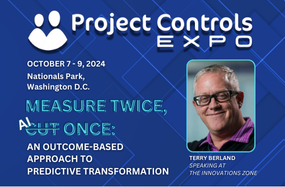The Future for Enterprise Project Portfolio Management is Virtually Certain
For some time now, Enterprise Project Portfolio Management (EPPM) has been a black art to people at all levels of an organization. Yet the secret to successful project portfolio management is simple. It’s good communication: having one version of the truth available in real time between the people delivering the projects and the people running the business. When people all managed their projects in the same place at the same time, the conventional centralized PMO, or Project Management Office, was the keeper of all things EPPM. But will this still be true for EPPM in the future?
Coming Down from the PMO Ivory Tower
EPPM must continue: enterprises will always do projects and have to manage them. The future of the project management office on the other hand is less clear. It’s not that the concept of the PMO is wrong, any more than waterfall-style system development is wrong. It’s more that clinging to the traditional PMO as the only way to manage project portfolios is now too limiting. It’s time to get real, with three big reasons to do so: the need to improve communications; the rise of agile projects; and the massive move to mobile working.
Dashboards for EPPM Information
Project managers need a system for entering and updating the information. The same system should also display the information in a way that can be easily customized to individual user preferences: online dashboards and flexible report generation are key items. By organizing access flexibly and securely as well, an enterprise software application like this gets the PMO down from the tower and out among the decision makers and operators. Project news, progress and results can all be made known in a timely way, keeping surprises to a minimum and success to a maximum.
Into the Agile Age
EPPM hosting also opens up the possibilities for agile projects with their rapid development and feedback cycles. With human beings creating, innovating and driving project activities, and smart software to track project progress globally and individually, enterprises can slice and dice their EPPM as they like. Teams and managers can compare their projects with others, and get immediate data on their return on investment. Customer requirements can be handled efficiently and effectively to stay aligned with business needs that may change as a project progresses.
Mobile EPPM is No Longer Just an Option
Contractors and employees have largely embraced the world of mobile with its smartphones and tablets. They also have expectations of being able to use them to get the information they need, whenever and wherever they need it. The same system that receives, organizes and displays project portfolio management information must now also do this over mobile communications networks. Relevant system features include streamlined user access with solid security, location awareness to improve performance over networks, and social media functionality to encourage remote collaboration and team working.
Welcome to Virtual EPPM
While it’s been on the cards for a while, these three factors of communication, agile and mobile are all moving EPPM fast into a world of virtual teams and asynchronous interworking. Even if there is still a role for the centralized PMO in some projects, and broadband mobile networks have yet to be extended to certain far-flung locations, with EEPM hosting, the future of EPPM is now a virtual one, distributed and online, from anywhere and at any time.
At LoadSpring, we streamline your Project Management decision-making process and bring you the right answers the first time around. So ask away. P: +1 978.685.9715








